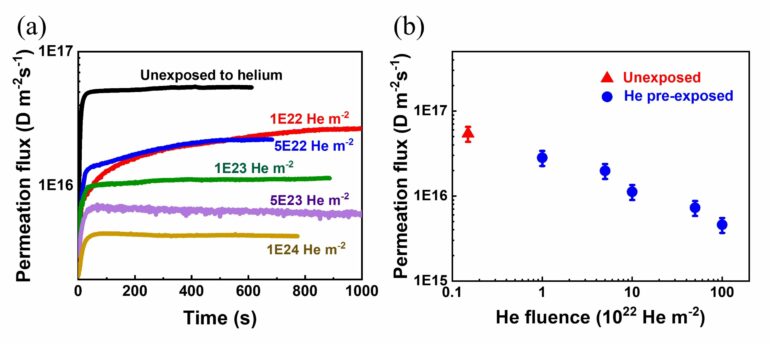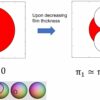The speed of magnetizing a material has been discovered by an international team of scientists.
The researchers from Lancaster University, University of California San Diego, Moscow Institute for Physics and Technology, and Radboud University have shed light on one of the most intriguing questions of magnetism: How fast can magnetization be created in a material?
Their research is published in Nature Communications.
The researchers looked at the common magnetic alloy of iron and rhodium (FeRh) which exhibits a transition in both its structure and magnetism when heated just above room temperature. At room temperature FeRh does not have a net magnetization due to its antiferromagnetic nature but when heated just above room temperature, the material becomes a ferromagnet.
The researchers found that FeRh undergoes a transition into its ferromagnetic phase in three stages:
the excitation of the laser pulse induces a large number of tiny magnetic domains in the materialthe magnetization of all the domains align along one particular directionthe individual domains grow to coalesce into a large single domain where it can be said that the material has undergone a transition into its ferromagnetic phase
Knowledge of the various stages involved and their corresponding timescales in inducing a well-defined magnetization with a light pulse offers the possibility of using FeRh in near future data storage technology.
For instance, FeRh can be used as the storage medium in heat-assisted magnetic recording (HAMR), a technology that uses both external heat and local magnetic fields to store information with much higher density of bits—tiny magnetic regions where information is stored.
Physicist Dr. Rajasekhar Medapalli from Lancaster University says that “understanding the details of various stages involved in the fast emergence of magnetization in a material helps scientists in developing ultrafast and energy efficient magnetic data storage technologies.”
The research involved using intense ultrashort laser pulses to rapidly heat FeRh in a brief artificial stimulus lasting only a quadrillionth of a second. Upon the interaction with the material, the laser pulse raised the temperature by a few hundred degrees Celsius at timescales shorter than a billionth of a second.
For a long time, it has been a fascinating goal for researchers in condensed matter physics to use this ultrafast heat and be able to control the magnetic phase transition in FeRh but it has been a challenge to experimentally detect this transition.
To overcome the challenge, the scientists used the fact that time-varying magnetization produces time-varying electric field in a medium that should act as an emitter of radiation. The emitted radiation carries sensitive information about its origin, i.e., time varying magnetization in the sample.
The researchers used the novel double pump time-resolved spectroscopy technique developed at Radboud University. They employed two laser pulses for double pumping: while the first laser pulse serves as ultrafast heater, the second one helps in generating electric field. By detecting this field at multiple time-lapses between the two laser pulses, the researchers were able to look how fast the magnetization emerges in the material.
More information:
G. Li et al, Ultrafast kinetics of the antiferromagnetic-ferromagnetic phase transition in FeRh, Nature Communications (2022). DOI: 10.1038/s41467-022-30591-2
Provided by
Lancaster University
Citation:
Insight into the fast emergence of magnetization (2022, June 13)



